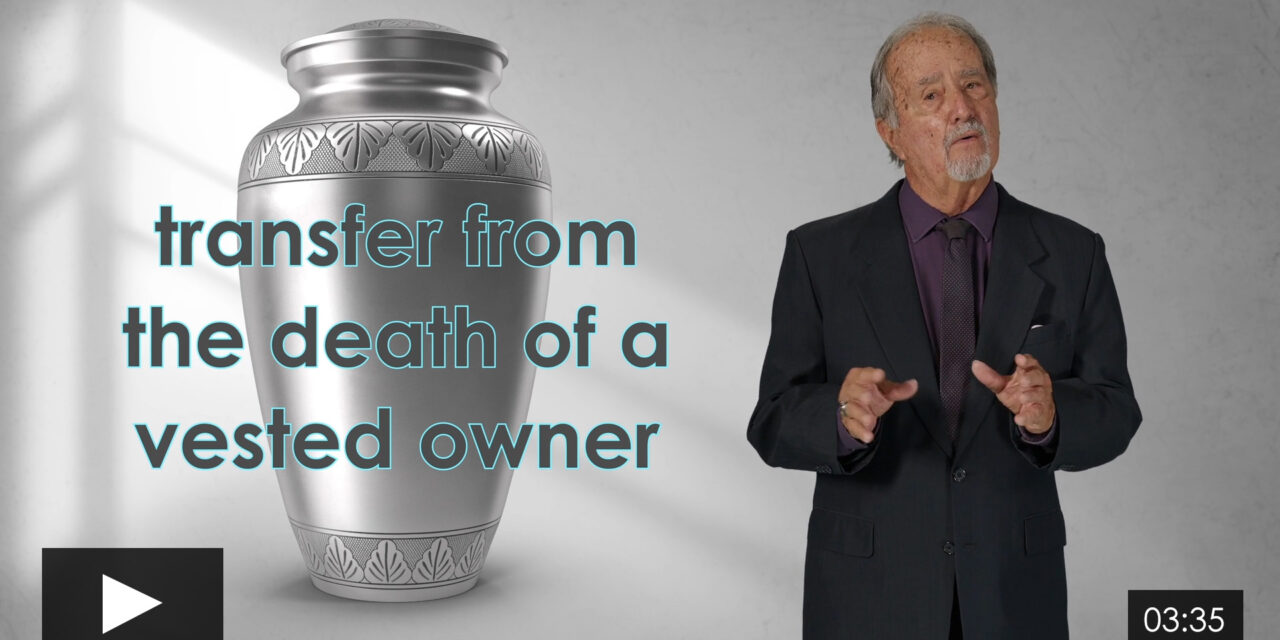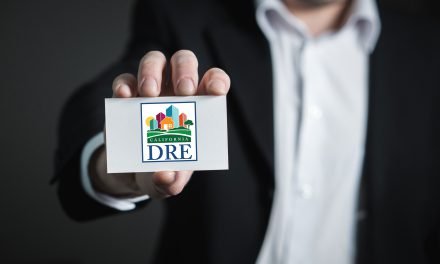This is the sixth episode in our new series dramatizing lender interference under the due-on clause in a trust deed during periods of rising interest rates. The prior episode covers triggering the due-on clause on a further encumbrance of a property or foreclosure by a junior lienholder.
This episode illustrates avoiding due-on enforcement on the death of an owner of a one-to-four unit residential property encumbered by an owner-occupant consumer-purpose mortgage, and due-on divorce and inter-family transfer exceptions.
Due-on-death
Transfers of real estate which trigger due-on enforcement by a mortgage holder include the inevitable transfer resulting on the death of a vested owner.
However, as with due-on enforcement triggered by a further encumbrance, very narrow exceptions apply to the death of an owner of a one-to-four unit residential property encumbered by an owner-occupant consumer-purpose mortgage.
For example, consider the transfer of a one-to-four unit residential property to a relative on the death of the owner. Does the death when title is transferred to a relative who occupies the property trigger the due-on clause in an existing owner-occupant consumer mortgage?
No! The due-on clause is not triggered by the death or the transfer so long as the relative taking title becomes an occupant of the residential property.
However, this waiver of the clause is conditioned on the lender’s confirmation that the relative taking title becomes or will become an occupant of the property. [12 Code of Federal Regulations §591.5(b)(1)(v)(A)]
Also, when two or more people hold title to one-to-four unit residential property as joint tenants, does the death of one joint tenant trigger due-on enforcement in the existing consumer mortgage?
Yes, unless, at least one of the joint tenants, either the deceased or a surviving joint tenant, occupied the property when the mortgage was originated. Thus, the mortgage when originated was an owner-occupant consumer-purpose mortgage.
Occupancy is not required for a surviving joint tenant who qualifies for this joint tenancy exception. [12 CFR §591.5(b)(1)(iii)]
In the transfer of all properties other than a one-to-four residential property encumbered by an owner-occupied consumer mortgage, the death of a vested owner, joint tenant or other co-owner triggers the mortgage holder’s due-on clause.
Thus, due-on enforcement is triggered on:
- the death of any vested owner of a consumer mortgaged one-to-four unit residential property by a transfer of the deceased’s ownership to a non-relative, by will or inter vivos trust, following the death of the owner;
- the death of a joint tenant owning a one-to-four unit residential property which was not originally occupied by either of the joint tenants;
- the death of a co-owner of any type of property other than an exempt transfer of consumer mortgaged one-to-four unit residential property; and
- the transfer of any property, other than an exempt transfer of a consumer mortgaged one-to-four unit residential property, to a relative or anyone else on the death of the owner. [12 CFR 191.4(b)]
Divorce and inter-family transfers
Consider a married couple who occupies a one-to-four unit residence vested in the name of the husband and owned as his separate property. The residence is encumbered by an owner-occupant consumer mortgage containing a due-on clause.
The couple separates and the residence is transferred to the wife as part of the property settlement to dissolve the marriage. The wife continues to occupy the residence.
Related, federal due-on regulations bar due-on enforcement on the transfer of a one-to-four unit residential property to a spouse in a divorce, so long as the acquiring spouse occupies the property. [12 CFR §591.5(b)(1)(v)(C)]
However, when the acquiring spouse chooses to lease the residential property for any period of time rather than occupy it, the mortgage holder may call or recast the mortgage.
Inter-family exception
Similarly, the due-on clause is not triggered by an owner’s transfer of their one-to-four unit residential property encumbered by an owner-occupant consumer mortgage to a spouse or child who occupies the property. [12 CFR §591.5(b)(1)(v)(B)]
Keep in mind this inter-family transfer exception to due-on enforcement applies only to transfers from an owner to a spouse or child. Any transfer from a child to a parent triggers due-on enforcement.
Consider an owner-occupant of one-to-four unit residential property encumbered by a consumer mortgage who intends to transfer title to the property into an inter vivos trust vesting, naming themselves as beneficiary. The owner continues to occupy the property after transferring title into the living trust vesting.
The owner notifies the mortgage holder prior to transfer. The owner agrees to give the mortgage holder notice of any later transfer of their beneficial interest in the trust or change in occupancy of the property as requested by the mortgage holder.
Does this approved transfer into the inter vivos trust trigger the due-on clause in a mortgage encumbering the owner’s residence?
No! The owner met the federal regulatory conditions for avoiding due-on enforcement based on a transfer of a consumer-mortgaged, owner-occupied, one-to-four unit residential property into an inter vivos trust vesting. [12 CFR §591.5(b)(1)(vi)]
To meet regulations, the owner needs to provide means acceptable to the mortgage holder by which the mortgage holder is given notice of any later transfer of the beneficial interest in the trust or change in occupancy. When the owner conveys the property into the inter vivos trust without the mortgage holder’s approval, the mortgage holder may call the mortgage due.
Further, when the owner does not continue to occupy the property, or later transfers the beneficial interest in the trust, the mortgage holder may call or recast the mortgage.














